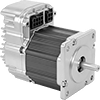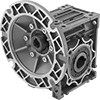Filter by
Input Voltage
Output Voltage
Horsepower @ Switching Voltage
Motor Reversing Capability
Voltage
Overload Current
Switching Current
Switching Voltage
Current
Shaft Diameter
Enclosure Rating
Motor Frame Size
Certification
DFARS Specialty Metals
Housing Material
Export Control Classification Number (ECCN)
Electrical
Power Transmission















































